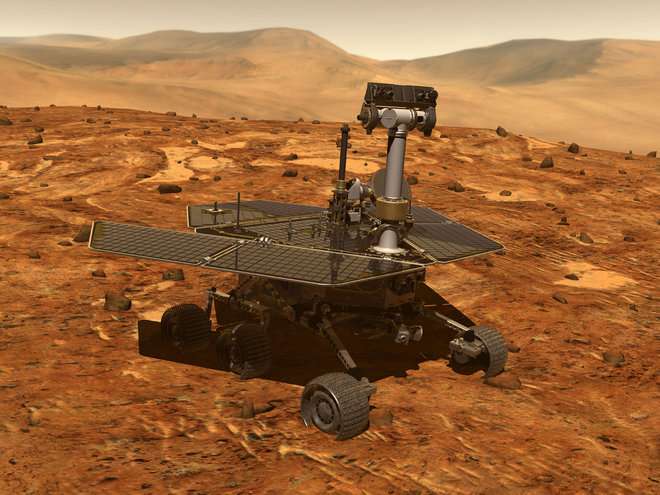The US space agency has given the rover a 45-day deadline before giving up on the robot, which has been exploring the Red Planet for 14 years. Skies are finally starting to clear over Mars following an epic sandstorm, and mission managers are hopeful that the rover will attempt to make contact soon.
“The sun is breaking through the haze over Perseverance Valley, and soon there will be enough sunlight present that Opportunity should be able to recharge its batteries,” said John Callas, Opportunity project manager at JPL, in NASA’s latest update on the rover.
However, if the robot is silent for 45 days after the storm subsides, the team will be “forced to conclude that the sun-blocking dust and the Martian cold have conspired to cause some type of fault from which the rover will more than likely not recover,” said Callas.
“At that point our active phase of reaching out to Opportunity will be at an end. However, in the unlikely chance that there is a large amount of dust sitting on the solar arrays that is blocking the sun’s energy, we will continue passive listening efforts for several months.”
If the golf-cart-sized vehicle can’t get enough sunlight, its batteries may brown out or lack the electricity needed to power the heaters to protect the machine’s electronic circuits from Mars’ blistering cold.
The Opportunity rover was only scheduled to last for three months, but has been exploring the Red Planet for over 14 years, clocking up more than a marathon worth of Mars miles. A global dust storm has been raging on the planet for nearly two months. The rover fell asleep on June 10 and has yet to wake up and “phone home.”
While dust storms aren’t an unusual occurrence on Mars - the planet is shroud in a red haze of dust once every couple of years – but NASA says this is “one of the most intense” storms ever recorded.
“This is the worst storm Opportunity has ever seen, and we’re doing what we can, crossing our fingers, and hoping for the best,” said Steve Squyres, a planetary scientist at Cornell University and leader of the rover mission, in a recent Planetary Society blog.
The robot is battling a killer weather combination with the extreme dust storm, which is blocking light to its solar panels and coating it in a fine dust, while also fighting -100 degree Fahrenheit temperatures. Together, they can reduce the rover’s ability to store and use electrical energy, while also shrinking and snapping electronic circuits.
The longer the robot goes without generating the electricity needed to charge its batteries, NASA says the batteries could “brown out” and the rover will join the defunct likes of Spirit, the Opportunity rover’s near-identical sister machine.
Spirit stopped communicating with NASA during an extreme Martian winter in March 2010. Engineers attempted to regain contact with it for more than a year afterwards, before they eventually gave up and left it to join the plant’s growing pile of space debris.
However, “there is reason to be optimistic,” says NASA, as the storm appears to be weakening, meaning that sunlight may have time to peak through the dust and give the rover a much-needed boost. But even if Opportunity does wake up, it’s still “not out of the woods” as “there's a real possibility the rover won't be the same.”
“The rover’s batteries could have discharged so much power – and stayed inactive so long – that their capacity is reduced. If those batteries can't hold as much charge, it could affect the rover's continued operations.”
RT
More about: NASA
















































